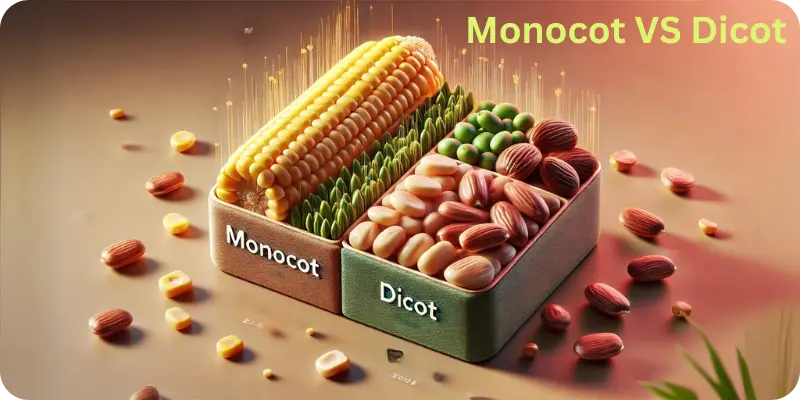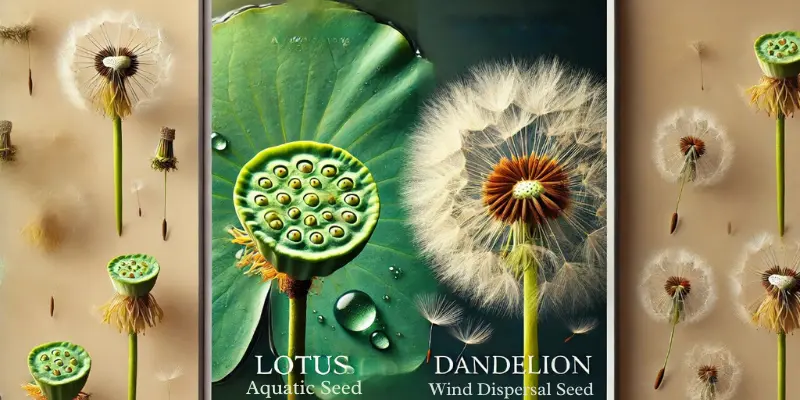Seed Structure: Understanding the Parts of a Seed
Updated: 10 Nov 2024
46
Whoever plants a tree and diligently looks after it until it matures and bears fruit will be rewarded. 🌳❤️🌞🍃 Prophet Muhammad (PBUH)
Are you aware of a seed’s contents and the effect of its structure on plant growth? A seed is like a sleeping giant: tiny and hidden at first, yet capable of growing into something gigantic and powerful when woken by nature’s clues. Biology scholars and botanists find the seed structure to be of great importance.
Sheila, a botanist with over seven years of experience, can help you learn amazing facts about seed anatomy. In this article, we will study the anatomy of seeds, the role of each seed part, and variations of seeds, with a conclusion at the end of my content.
Let’s start to unveil the secrets of nature about seed anatomy.
Anatomy of a Seed
A seed comprises multiple vital components, each with a particular purpose supporting its survival and final development into a plant. Here is a complete set of internal parts of the seed:
- Seed Coat
- Embryo
- Endosperm
1. Seed Coat (Testa)
The testa is an integral part of the seed. It is a protective cover. Under unfavourable conditions, it also plays a significant role in dormancy, when the seed remains viable for an extended period.
2. Embryo
It is an essential part of a seed that develops into a healthy plant, like a baby plant waiting to grow. It consists of three parts.
- Plumule
- Radicle
- Hypocotyl
- Plumule: Plumule is an embryonic shoot that will develop into a stem and leaves.
- Radicle: It is an embryonic root that will develop into a plant, root system
- Hypocotyl: It is located below the cotyledons that form the stem.
3. Endosperm
It is a tissue that nourishes the developing plant and stores essential nutrients for early-stage plant growth. The main components of endosperm are mentioned below:
- Starch
- Protein
- Fats
Starch: It is provided during germination
Protein: It plays a role in tissue development.
Fats: Fats are energy banks or reserves.
Role of Each Seed Part
Each seed component is essential to plant germination and growth.
To plant a garden is to believe in tomorrow. 🌿🌷 Audrey Hepburn
- Testa: The seed coat protects the embryo and regulates water intake.
- Embryo: The embryo contains the plant’s early structures.
- Cotyledons: Early-growth cotyledons store seed nourishment.
- Endosperm: Adds germination nutrients.
Seed Variations In Nature
Seeds exhibit various adaptations that allow them to thrive in different environments. I will discuss only two main types:
- Cotyledons: On the basis of seed number
- Seeds with special Adaptation
Cotyledons: On the basis of Seed Number
Seed leaves, or cotyledons, store nutrients for germination. Here are two types of cotyledon:
- Monocotyledons or Monocots
- Dicotyledons or Dicots
These cotyledon types show different anatomy, influencing the germination and growth processes.

| Features | Monocots | Dicots |
|---|---|---|
| Number of Seeds | One | Two |
| Leaf Veins | Parallel | Net-like |
| Root Structure | Fibrous roots | Tap roots |
| Examples | Maize, Rice | Beans, Sunflower |
If you want to learn more about monocots and dicots, please click here………………..{what is a seed?}
2. Seeds with Special Adaptations
Some seeds have developed unique traits to adapt to their environments:
- Aquatic Seeds
- Wind-Dispersed Seeds
Aquatic Seeds: Seeds of water plants contain air-filled chambers for flotation. The Lotus seed is the best example of an aquatic seed.
Wind-Dispersed Seeds: Seeds such as dandelions are lightweight and have structures that allow them to float in the air.

| Interesting Facts |
|---|
Dormant seeds can grow after 2,000 years. 🌱 Over 50% of the world’s food comes from monocots like rice and wheat. 🍚🌾 Coco de mer, the seed of a palm tree, is the largest in the world. 🥥🌴 |
Conclusion
The creation of a thousand forests is in one acorn. 🌳🌱Ralph Waldo Emerson
Understanding the seed structure reveals the remarkable journey that a seed takes from being a tiny seed to a strong plant. All components, from the embryo to the endosperm, collaborate to ensure that the germination and growth processes are effective.
We can assist in agriculture, horticulture, and ecosystems if we appreciate this process. In what ways has this new information altered your perspective on the lives of plants?
Feel free to add your ideas and discuss how seeds change the world.
Seed Structure Quiz
FAQs
Check out these frequently asked questions to learn more about seed structure.
What is the basic structure of a seed?
The primary structure of a seed consists of three main parts:
- Seed coat,
- Embryo,
- Food reserves (cotyledons or endosperm)
Why is understanding seed anatomy important for agriculture?
Optimising seed germination and plant growth in agriculture requires knowledge of seed structure. Knowing how each seed portion works helps farmers increase crop yields, manage soil, and choose the best seeds for their environment.
What are the differences between monocot and dicot seed structures?
Monocot seeds, like maize, have one cotyledon; dicot seeds, like beans, have two. This difference in seed shape influences nutrient storage, germination, and growth patterns, making it essential for crop production.
Why are aquatic seeds adapted with air-filled chambers?
Aquatic seeds, like Lotus seeds, have air chambers to help them float on water, aiding in dispersal and growth.
What role does the endosperm play in a seed?
The endosperm nourishes the developing plant with essential nutrients like starch, proteins, and fats.

Please Write Your Comments